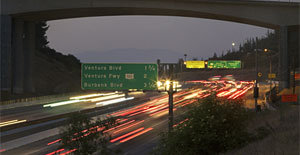Jacques Walker, an original Project 50 client, in the rooftop garden of Skid Row Housing Trust’s Cobb Apartments.
When we first launched Project 50, targeting the most vulnerable homeless residents on Skid Row for housing, medical care, mental health and other critically important services, we knew it was the right thing to do.
What we didn’t know for sure was whether this pilot project would pencil out in Los Angeles—as it has elsewhere—as a financially smart way to cut the incredibly high costs associated with chronic, long-term homelessness.
Now we know.
A new report assessing the cost-effectiveness of Project 50 is in, and the results offer powerful support for the economic benefits of doing the right thing by some of the people our society has shamefully left by the wayside for far too long.
The study, by the county’s Chief Executive Office, found that Project 50 in its first two years actually saved more money than it spent—with $3.045 million invested in the program resulting in savings of $3.284 million. Put another way, each permanent supportive housing unit we provided over those two years saved the taxpayers $4,774.
Even for Project 50’s most committed supporters like me, those are some mighty impressive numbers.
Yes, we spent more money on mental health care and substance abuse treatment for Project 50 participants—but we saved even larger amounts than we would have spent incarcerating them or caring for them in our clinics and emergency rooms if their conditions had gone untreated.
What’s even more intriguing is how Project 50 participants’ mental health care costs stacked up compared to those of a similar group of homeless people not in the program. Both groups had rising mental health care costs after Project 50 started—but the Project 50 group’s care cost significantly less. That’s because they received mental health outpatient care, unlike members of the comparison group, who needed far costlier hospital and emergency room crisis treatment.
Since our goal in launching this project in 2008 was to move the most hard-core homeless people off the streets, while supporting them with services to combat their substance abuse and mental health demons, these data provide vindication for the “housing-first” approach.
If we can meet people where they are—not where we wish they were, in terms of drug and alcohol abuse—we can make a profound difference, not just in their lives but in the county’s bottom line.
Since Project 50 began, we and our coalition of partner agencies have expanded the concept beyond Skid Row to reach chronically homeless people in Hollywood, Santa Monica, Venice and Van Nuys. We’ve also launched Project 60, which serves chronically homeless veterans.
In all, nearly 600 lives have been touched by this remarkable program.
This new assessment of Project 50’s cost-effectiveness shows that it’s time to think even bigger. I believe we can set our sights on reaching all of the approximately 11,000 chronically homeless individuals who sleep on our county’s streets each night.
Taking a “housing first” approach with each of them is the right thing to do—and it turns out to be a great investment, too.
Read the Los Angeles Times’ report on the new study here.
Posted 6/6/12






